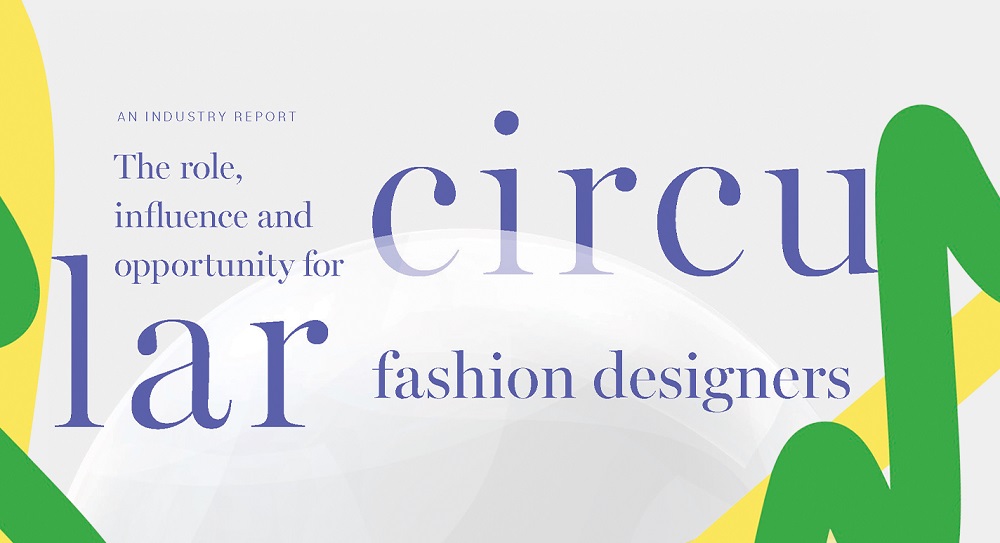Supported by the VF Foundation, the report focuses on the fashion design stage in China and Southeast Asia, which produces approximately 60% of global exports of garments, textiles, and footwear[1].

Fashion's environmental challenges, mostly brought on by its current linear system, are well known. Approximately 100 billion apparel items are produced per year, representing a 50% increase since 2006. The majority of clothing is landfilled or burned within one year of production.[2] As one of the world's most polluting industries, fashion currently contributes up to 10% of global CO2[3] and on its current trajectory is projected to use 25% of the world's carbon budget by 2050.[4]
Much work is needed to transition to a circular fashion system, including transforming the fashion design stage, where it is estimated that 80% of a product's environmental impact is determined.[5]
RESULTS SHOW GAPS – KNOWLEDGE AND INVESTMENT URGENTLY NEEDED
The industry report highlights a circular design knowledge gap, with 79% of survey respondents saying they "agree, either somewhat or strongly, that implementing circular design poses challenges"; financial barriers for circular design, with 71% of all respondents saying that "cost is a resistance factor when choosing materials to reduce environmental impacts"; and that lack of commitment and collaboration from top management is hampering progress at the design stage.
"The results of our report show that Asia's fashion industry is not equipped to deliver the supply chain of the future," said Christina Dean, Founder, Redress. "Legislation is changing, with the European Union continuing to tighten regulations targeting fashion's environmental and social impact. This will have implications throughout the supply chain, especially in Asia, where 70% of the EU's textiles are made.[6] Urgent investment in fashion circularity is needed, from recycling to new materials, along with an urgent reallocation of resources, upskilling, and reskilling."
Redress' quantitative survey was answered by 195 global fashion professionals working within the design stage. Forty qualitative interviews were also conducted with fashion professionals working within companies producing apparel for the European, Chinese, and Southeast Asian markets, along with five educators specialising in design and sustainability.
Based on the findings, Redress urges the APAC region's fashion industry to better support the implementation of circularity at the design stage by closing the knowledge gap through education and capacity building; re-addressing financial barriers with a long-term mindset; and creating a more collaborative working structure with support from top management.
"At The VF Foundation, we know driving a more circular system, from product creation to consumer engagement, is critical for the fashion industry to achieve a more sustainable future," says Gloria Schoch, Executive Director, The VF Foundation and Senior Director, VF Corporation. "This report reinforces the importance of educating designers and finding opportunities to instil these values into the next generation of designers to make meaningful progress at scale."
REDRESS: PROVIDING SOLUTIONS TO CLOSE THE KNOWLEDGE GAP
A key pillar of Redress' work is educating designers on circular and sustainable design theories and techniques. These educational efforts are supported by partnerships, with industry leaders and over 170 universities to deliver sustainable fashion curricula to the next generation of designers.
The knowledge shared by Redress is in high demand, with the Redress Academy, a free online resource on circular fashion topics, seeing over 68,000 hits this year. Highlights from recent workshops partaken by Finalists of the Redress Design Award 2023, the world's largest sustainable fashion design competition, have recently been shared as educational circular case studies. These include:
- The Circular Redesign Challenge with TAL Apparel: where emerging designers were tasked with producing a garment, created from redesigning waste from within a factory production line.
- The Customer Experience Challenge with sustainable luxury retail packaging experts Delta Global: where participants were asked to construct a conceptual packaging solution with consideration for longevity of the product and consumer engagement.
COLLABORATING TO PUSH SUSTAINABLE FASHION IN CHINA
With China being one of the world's largest clothing exporters[7], Redress' collaborations in China also mark important milestones in sustainable development for the fashion industry.
Redress presented results from its industry report at a panel discussion at Fashion Summit Hong Kong, Asia's sustainable fashion event, as well as at Shanghai Fashion Week.
Demonstrating that collaboration between supportive organisations and knowledgeable designers is key to successful implementation of circular practices, Redress also recently signed a memorandum of understanding with the Shenzhen Garment Industry Association, organisers of Shenzhen Fashion Week.
Editor's Notes
- Register to receive Redress' industry report on the role of circular designers here.
- Further supporting statistics are here.
Hashtag: #Redress
The issuer is solely responsible for the content of this announcement.
About Redress (www.redress.com.hk)
Redress (www.redress.com.hk) is a Hong Kong-headquartered, Asia-focused environmental NGO with a mission to accelerate the change to a circular fashion industry by educating and empowering designers and consumers so as to reduce clothing's negative environmental impacts.
The Redress Design Award (www.redressdesignaward.com) is the world's largest sustainable fashion design competition that educates and empowers emerging fashion designers about circular design techniques to reduce fashion's negative environmental impacts. Organised by Hong Kong-headquartered, Asia-focused environmental NGO Redress annually since 2011, the competition now has over 150 global fashion university partners and attracts designer applicants from over 50 countries and regions to win prizes that connect them with global-leading fashion businesses to accelerate the change to a circular fashion industry.



















